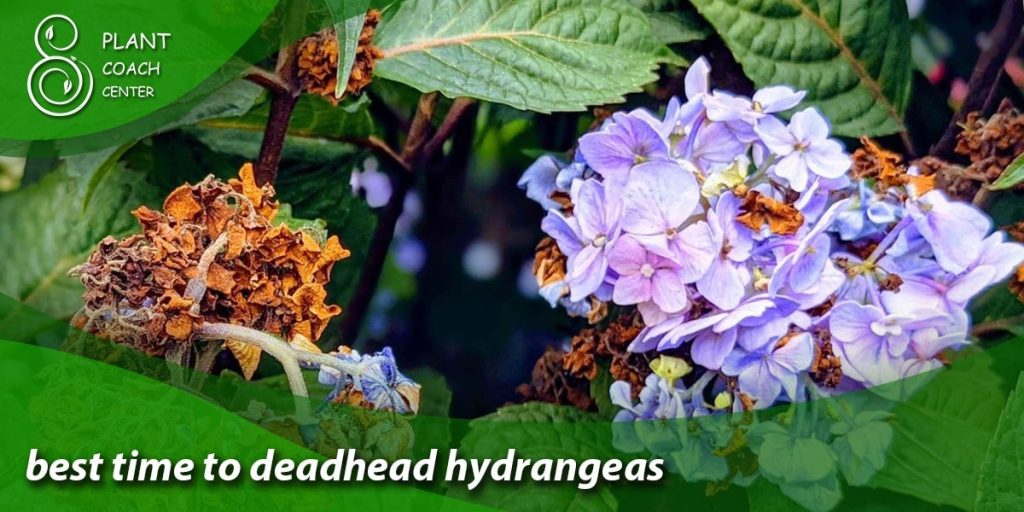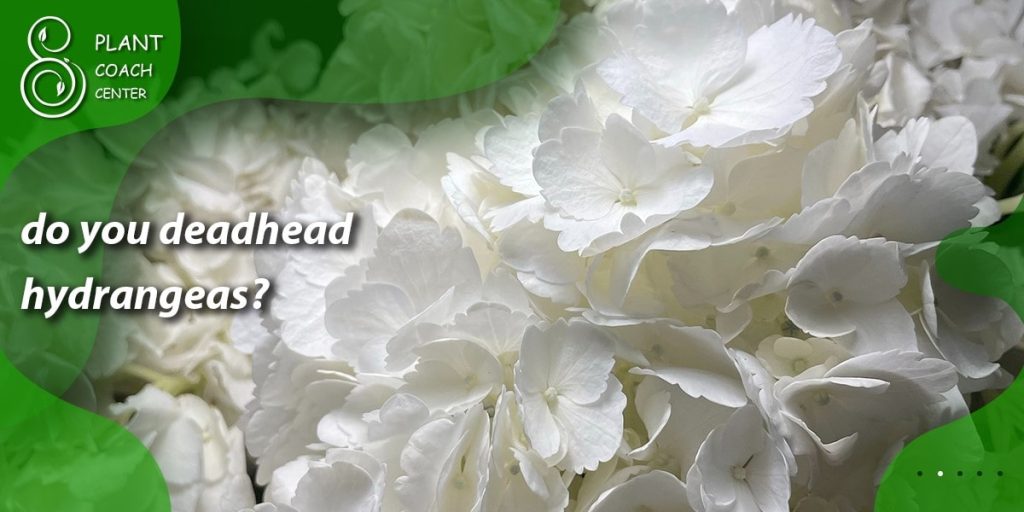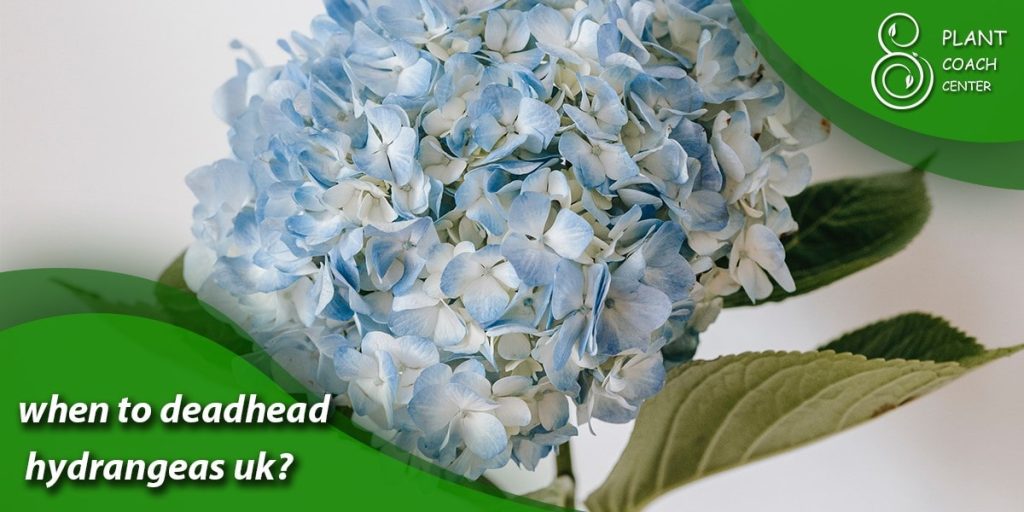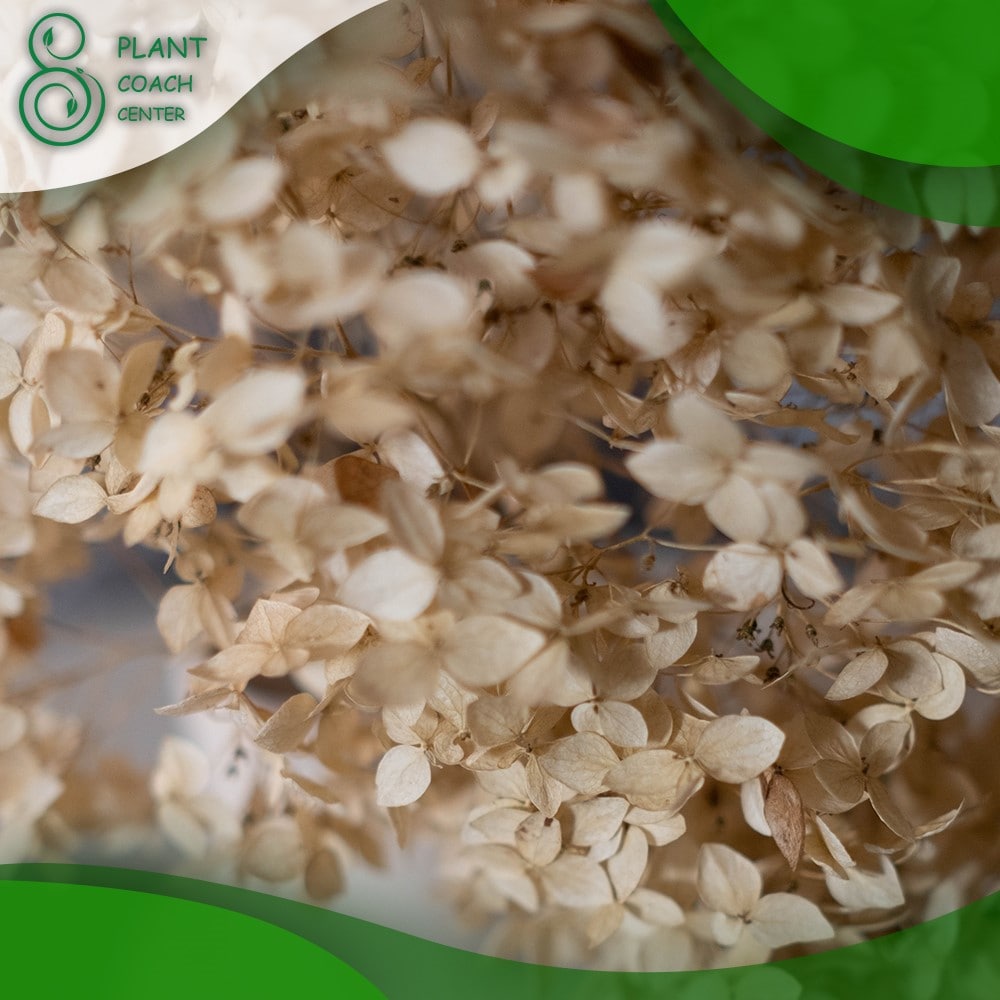When Should I Deadhead Hydrangeas?
Welcome to the enchanting world of hydrangeas, where delicate clusters of blossoms paint the landscape with hues ranging from soft pastels to vibrant jewel tones. As a dedicated gardener, you’ve likely marveled at the breathtaking beauty these flowering shrubs bring to your outdoor sanctuary. However, like any masterpiece, hydrangeas require careful tending to maintain their splendor.
One crucial aspect of nurturing these botanical wonders is the art of deadheading. In this article, we will embark on a journey to uncover the secrets of timing and technique when it comes to deadheading hydrangeas. By understanding the intricacies of this practice, you’ll not only ensure the continued vitality and vibrancy of your hydrangea blooms and unlock the potential for an even more bountiful display of nature’s artistry.
So, join us as we explore the delicate balance between preservation and rejuvenation, discovering the optimal moments to trim spent blossoms and encourage these remarkable plants to flourish anew.

Blossom Beauty and the Art of Deadheading
Hydrangeas, those enchanting floral gems, have long captivated garden enthusiasts with their intricate blooms resembling nature’s watercolor paintings. Picture-perfect and bursting with character, hydrangea flowers create a captivating spectacle that can transform any garden into a living work of art. Yet, as these beauties bloom prolifically throughout the growing season, their petals inevitably begin to fade, signaling the perfect moment to exercise the skill of deadheading.
Deadheading removes spent blooms and is akin to a painter meticulously refining their canvas. By snipping away the withering petals, you’re not merely tidying up the garden but engaging in a creative process that encourages the plant to channel its energy towards new growth. This horticultural artistry offers more than just aesthetic benefits—it’s a vital part of the cycle that ensures your hydrangeas continue to dazzle with vitality and exuberance.
Imagine strolling through your garden, witnessing the seamless progression of blooms from the first whisper of color to the peak of their brilliance. With each deadheaded blush, you’re giving your hydrangeas a fresh start, enabling them to allocate resources toward producing new, vibrant buds. This delicate balance between nurturing existing beauty and making way for future splendor is at the heart of the art of deadheading.
Intriguingly, the act of deadheading hydrangeas is not a one-size-fits-all endeavor. Different hydrangea varieties and species have their own unique blooming patterns and behaviors. Understanding these nuances is like mastering the intricacies of a painter’s palette, allowing you to create a garden tableau that evolves harmoniously. From the mophead hydrangeas’ round clusters resembling fluffy clouds to the lace cap hydrangeas’ delicate, lacy petals, each type demands a slightly different approach to deadheading.
In the following sections of this article, we’ll dive into the seasonal rhythms that govern hydrangea blooms, teaching you how to recognize the delicate signals that indicate the optimal time for deadheading. By refining this art, you’ll continue to draw eyes to your garden’s stunning display and cultivate a deeper connection with the natural world, where every spent bloom becomes a brushstroke in the ongoing masterpiece of your hydrangea garden.
A Deadheading Calendar for Hydrangeas
Just as an artist selects the right moment to apply a brushstroke, a gardener must also choose the opportune time for deadheading hydrangeas. Each variety of hydrangea blooms on its own schedule, and understanding these rhythms is the key to maintaining a garden that flourishes year after year.
Bigleaf Hydrangeas (Hydrangea macrophylla)
These popular hydrangeas, mophead or lace-cap hydrangeas, typically bloom in late spring through summer. Deadheading should be carried out as soon as the blossoms fade, usually in late summer or early fall. By promptly removing spent blooms, you allow the plant to conserve energy for next year’s flowers.
Panicle Hydrangeas (Hydrangea paniculata)
These hardy hydrangeas produce elongated clusters of flowers that change color as they mature. Panicle hydrangeas bloom from summer to fall, and deadheading can be done in late fall or early spring. Leaving the faded blooms over winter can add interest to your garden while providing some protection to the plant.
Oakleaf Hydrangeas (Hydrangea quercifolia)
Oakleaf hydrangeas bear cone-shaped clusters of blooms and are renowned for their striking foliage. Deadheading can be done as the flowers fade, usually in late summer. These hydrangeas offer a bonus: their foliage transforms into vibrant shades of red and purple in the fall, enhancing the autumn landscape.
Smooth Hydrangeas (Hydrangea arborescens)
These hydrangeas feature round, globe-like flower clusters and tend to bloom in early summer. Deadheading can be performed in late summer to tidy up the plant’s appearance, but they often benefit from more aggressive pruning in early spring to encourage new growth and larger blooms.

Recognizing When Hydrangea Blooms Are Spent
Like a chapter in a novel that reaches its conclusion, hydrangea blooms have their own tale to tell through their transformation. Understanding the signals that mark the end of their vibrant display is a skill every gardener should master. By recognizing the signs of fading glory, you can step in at the perfect moment and engage in the art of deadheading with precision.
Change in Color
A color shift is one of the most telltale signs that a hydrangea bloom is fading. The vibrant hues that once dazzled begin to mellow, taking on a softer, more muted appearance. As the petals lose their luster and intensity, it indicates that the bloom has given its all.
Petal Texture
Fading hydrangea petals often lose their smooth and taut texture. They may feel slightly papery or even translucent. When you gently touch a petal and notice it has become delicate and fragile, it clearly indicates that the bloom’s prime has passed.
Browning Edges
The edges of hydrangea petals may start to brown as the bloom ages. This is a sign of natural wear and tear as the petals experience exposure to sunlight, weather, and the passage of time. As these browning edges spread inward, the bloom’s beauty gradually wanes.
Drooping Appearance
Hydrangea blooms can take on a slightly drooping or wilting appearance as they age. While this change might be subtle initially, it’s a reliable sign that the bloom’s energy is waning and its lifecycle is ending.
Reduced Fullness
Hydrangea blooms that were once plump and lush may lose their fullness as they age. The individual petals might separate slightly, giving the color a more open and airy appearance than its earlier, densely packed form.
Seed Formation
Many hydrangea species begin to develop seed pods as the blooms fade. These small, green structures may appear at the bloom’s center and indicate that the plant is transitioning from the blooming phase to the seed-setting phase.
Visual Comparison
A simple yet effective method to determine if a hydrangea bloom is spent is to compare it with neighboring blooms still in their prime. By observing the contrast between the fading flower and its vibrant counterparts, you can quickly identify which blossoms are ready for deadheading.

Snip, Snap, and Revive
Deadheading hydrangeas is akin to performing delicate surgery on a living canvas. The right cutting techniques can maintain the aesthetic appeal of your garden and breathe new life into your hydrangea plants, encouraging them to flourish with renewed vigor.
Clean Cuts
When deadheading hydrangeas, it’s essential to make clean, precise cuts. Use sharp and clean pruning shears or scissors to avoid tearing or damaging the remaining stems. A jagged cut can hinder the plant’s ability to heal properly and may lead to disease or slower regrowth.
Leaf Node Awareness
Look for a pair of healthy leaves or leaf buds on the stem where you intend to make the cut. Aim to make your cut just above a leaf node. This encourages new growth to emerge from the node, promoting a more compact and bushy growth habit.
Angle of Cut
Make your cut at a slight angle, roughly 45 degrees, facing away from the plant. This helps prevent water from pooling on the cut surface, reducing the risk of fungal infections. Additionally, an angled cut provides a larger surface area for new growth to emerge.
Remove Entire Flowerhead
When deadheading hydrangeas, removing the entire flowerhead, including any small stems or branches that support it, is recommended. By doing so, you not only tidy up the plant’s appearance but also prevent potential rot or disease from affecting the decaying flowers.
Stem Length
Consider the desired height of your hydrangea bush when deadheading. If you want a more compact and bushy plant, trim the stem back to a pair of healthy leaves or buds lower down on the branch. If you prefer a taller appearance, leave more of the stem intact.
Timing Matters
Deadheading too early in the season can remove buds that would have bloomed later. Therefore, waiting until the fading blooms have thoroughly matured before you begin deadheading is advisable. Also, avoid deadheading too late, as this can interfere with the plant’s ability to set next year’s buds.

Why Deadheading Supports Healthy Hydrangeas
Behind the artful act of deadheading hydrangeas lies a fascinating world of plant biology and horticultural science. Understanding the mechanisms that drive growth and renewal sheds light on why deadheading is more than just a cosmetic practice—it’s a fundamental technique supporting your hydrangea plants’ overall health and vitality.
Energy Redistribution
Hydrangea blooms require a significant amount of energy to develop and maintain. As they age and fade, they become a resource drain on the plant. Deadheading redirects the energy that would have been used to sustain the fading blooms toward other vital processes, such as root development, leaf growth, and the formation of new buds.
Preventing Seed Formation
Left unattended, fading hydrangea blooms can transition into seed production. This diverts energy from creating new flower buds and can result in a less prolific blooming season the following year. By deadheading, you interrupt this natural progression, encouraging the plant to focus on producing more blooms for the upcoming seasons.
Encouraging Auxin Production
Auxins are plant hormones responsible for regulating growth and development. When a hydrangea bloom is removed through deadheading, the plant interprets this as a signal that change needs to be stimulated. This leads to the production of auxins, promoting the emergence of new shoots, leaves, and flower buds.
Pruning and Air Circulation
Deadheading involves removing spent blooms and any associated stems and foliage. This reduction in plant material improves air circulation and reduces the risk of fungal diseases. Improved air circulation helps keep the plant’s leaves dry, minimizing the conditions that encourage diseases to take hold.
Balanced Branching
Deadheading hydrangeas contribute to a more balanced branching structure. Trimming back spent blooms and stems prevents the plant from becoming top-heavy and encourages growth from lower nodes. This results in a more robust and aesthetically pleasing plant form.
Additional Care Tips for Lush Hydrangea Beds
While mastering the art of deadheading is a crucial aspect of maintaining the health and beauty of your hydrangeas, there are additional care strategies that can elevate your garden to new heights of lushness and vibrancy. These supplementary practices work in harmony with deadheading, creating a holistic approach to nurturing your hydrangea beds.
Adequate Watering
Hydrangeas have earned their name for a reason—they love water! Ensuring your hydrangeas receive consistent and adequate watering is essential for their overall health. Water profoundly, but avoid waterlogging the soil. A layer of mulch around the base of the plants can help retain moisture and regulate temperature.
Proper Soil Conditions
Hydrangeas thrive in well-draining soil rich in organic matter. Test the soil’s pH to ensure it is within the ideal range for your hydrangea variety. Adjusting the soil’s acidity or alkalinity can influence the color of the blooms, offering an additional layer of creative control over your garden’s aesthetics.
Prudent Pruning
While deadheading addresses spent blooms, regular pruning can shape and rejuvenate your hydrangea bushes. Remove dead or diseased wood, trim overgrown branches to encourage new growth, and maintain an appealing form.
Fertilization Wisdom
Hydrangeas benefit from well-timed fertilization. Applying a balanced, slow-release fertilizer in early spring before new growth emerges can provide the necessary nutrients for a strong start to the growing season. Be cautious not to over-fertilize, as this can lead to excessive foliage growth at the expense of blooms.

Drying and Crafting with Deadheaded Hydrangea Blooms
As the seasons transition and your hydrangeas gracefully fade, don’t let the beauty of their spent blooms go to waste. Deadheading hydrangeas present a unique opportunity to capture their ephemeral charm through various preservation and crafting techniques. These creative endeavors allow you to extend the lifespan of your hydrangea blooms while infusing your living space with the timeless allure of nature.
Air Drying
One of the simplest methods to preserve hydrangea blooms is air drying. Carefully remove the deadheaded flowers from the plant and gather them into small bunches. Hang these bunches upside down in a cool, dry place with good air circulation. Over a few weeks, the blooms will gradually dry while retaining much of their original color and shape.
Water Drying
Submerging hydrangea blooms in water is another elegant way to preserve their beauty. Fill a vase or container with a small amount of water and place the flowers inside. The blooms will dry naturally as the water evaporates while maintaining their color and form. This method can result in slightly translucent blooms, lending a delicate charm to your dried arrangements.
Silica Gel Method
Silica gel is a desiccant that absorbs moisture, making it an effective tool for preserving hydrangea blooms. Gently bury the flowers in a silica gel container, ensuring the colors are fully covered. Seal the container and allow it to sit for about a week. The silica gel will remove moisture from the blooms, leaving them beautifully preserved.
Pressed Hydrangeas
Pressing hydrangea blooms between the pages of a heavy book is a timeless preservation method. Place the flowers between sheets of absorbent paper, then encourage them by stacking heavy books on top. After a few weeks, your pressed hydrangea blooms can be used in various crafts, from greeting cards to framed botanical art.
Crafting Delights
Dried hydrangea blooms are a versatile addition to various crafting projects. Create wreaths, floral arrangements, and centerpieces by incorporating your preserved blooms. Alternatively, glue dried hydrangea petals onto decorative objects, such as candles or picture frames, to infuse your space with the delicate elegance of these timeless flowers.
Seasonal Décor
Dried hydrangea blooms lend themselves beautifully to seasonal décor. Adorn your home with wreaths and garlands that capture the spirit of each season, whether it’s the warm colors of autumn or the crisp elegance of winter.
Conclusion
In the delicate dance of tending to your hydrangeas, you’ve embarked on a journey that intertwines art, science, and a profound connection with nature. From the meticulous artistry of deadheading to the science that underpins growth and renewal, your garden has become a living testament to your care and expertise.
As you nurture and rejuvenate each bloom, you orchestrate a symphony of colors, forms, and textures that echoes through the seasons. And as your hydrangeas gracefully bow to the passage of time, you’re not merely witnessing their transformation—you’re participating in it, channeling your love for nature into every carefully chosen cut and tenderly tended stem.
So whether you’re cultivating a lush sanctuary or crafting dried blooms into timeless treasures, the journey is as enchanting as the destination. For more gardening insights and inspiration, visit plantcouchcenter.com, where your passion for plants finds its virtual home.
When to deadhead hydrangeas?
Deadhead after blooms fade, but timing varies based on hydrangea type and local climate.
How do I deadhead correctly?
Trim above the leaf node at a 45-degree angle to encourage new growth and prevent water pooling.
Can I dry hydrangea blooms?
Yes, air dry or use silica gel to preserve blooms for crafts and décor.







